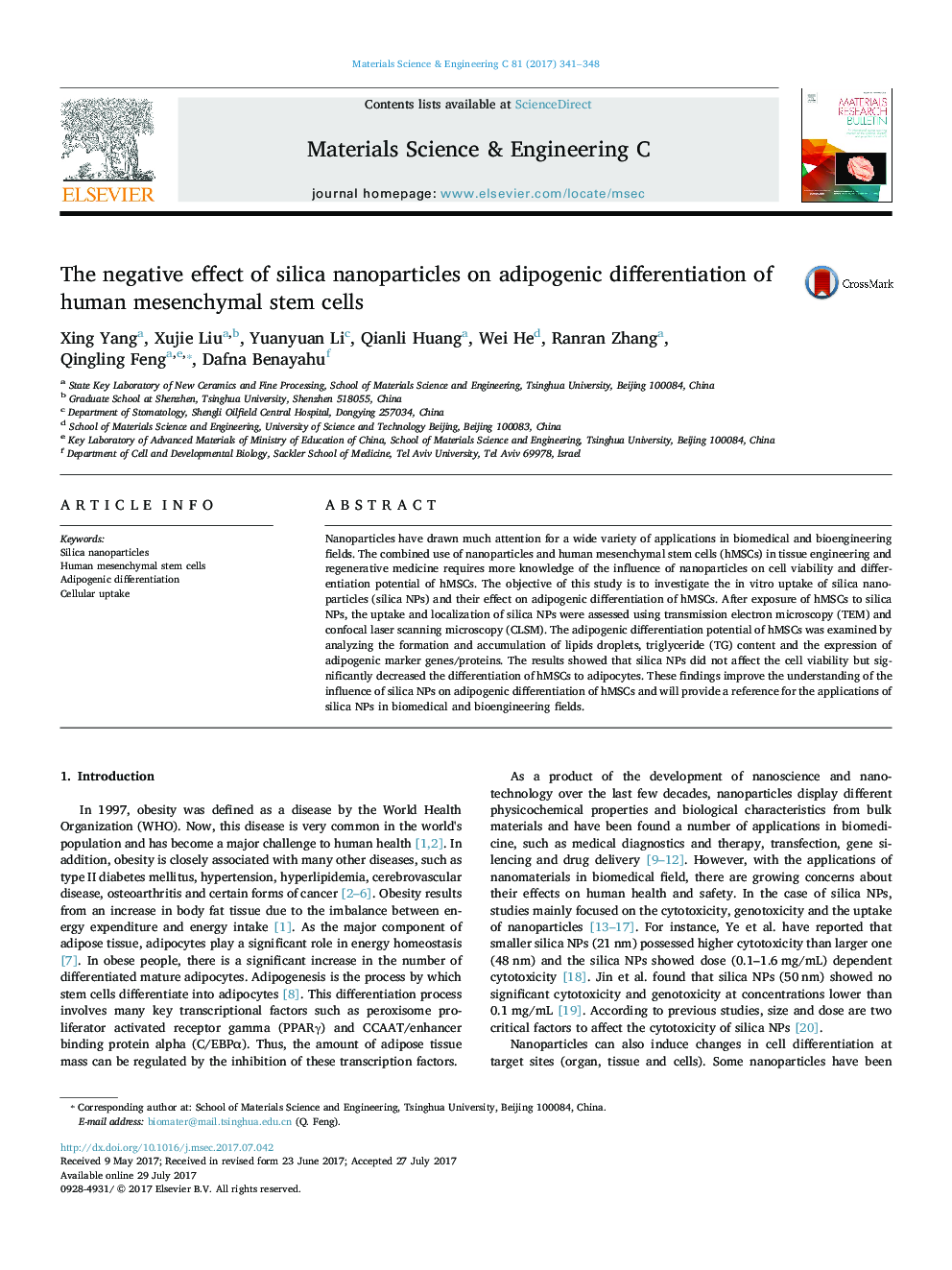| Article ID | Journal | Published Year | Pages | File Type |
|---|---|---|---|---|
| 5434245 | Materials Science and Engineering: C | 2017 | 8 Pages |
â¢The effect of silica NPs on adipogenic differentiation of hMSCs is investigated.â¢The cell uptake of silica NPs is both qualitatively and quantitatively confirmed.â¢Silica NPs can inhibit the differentiation of hMSCs to adipocytes.â¢The negative effect may be primarily caused by downregulation of PPARγ and C/EBPα.
Nanoparticles have drawn much attention for a wide variety of applications in biomedical and bioengineering fields. The combined use of nanoparticles and human mesenchymal stem cells (hMSCs) in tissue engineering and regenerative medicine requires more knowledge of the influence of nanoparticles on cell viability and differentiation potential of hMSCs. The objective of this study is to investigate the in vitro uptake of silica nanoparticles (silica NPs) and their effect on adipogenic differentiation of hMSCs. After exposure of hMSCs to silica NPs, the uptake and localization of silica NPs were assessed using transmission electron microscopy (TEM) and confocal laser scanning microscopy (CLSM). The adipogenic differentiation potential of hMSCs was examined by analyzing the formation and accumulation of lipids droplets, triglyceride (TG) content and the expression of adipogenic marker genes/proteins. The results showed that silica NPs did not affect the cell viability but significantly decreased the differentiation of hMSCs to adipocytes. These findings improve the understanding of the influence of silica NPs on adipogenic differentiation of hMSCs and will provide a reference for the applications of silica NPs in biomedical and bioengineering fields.
Graphical abstractDownload high-res image (157KB)Download full-size image
